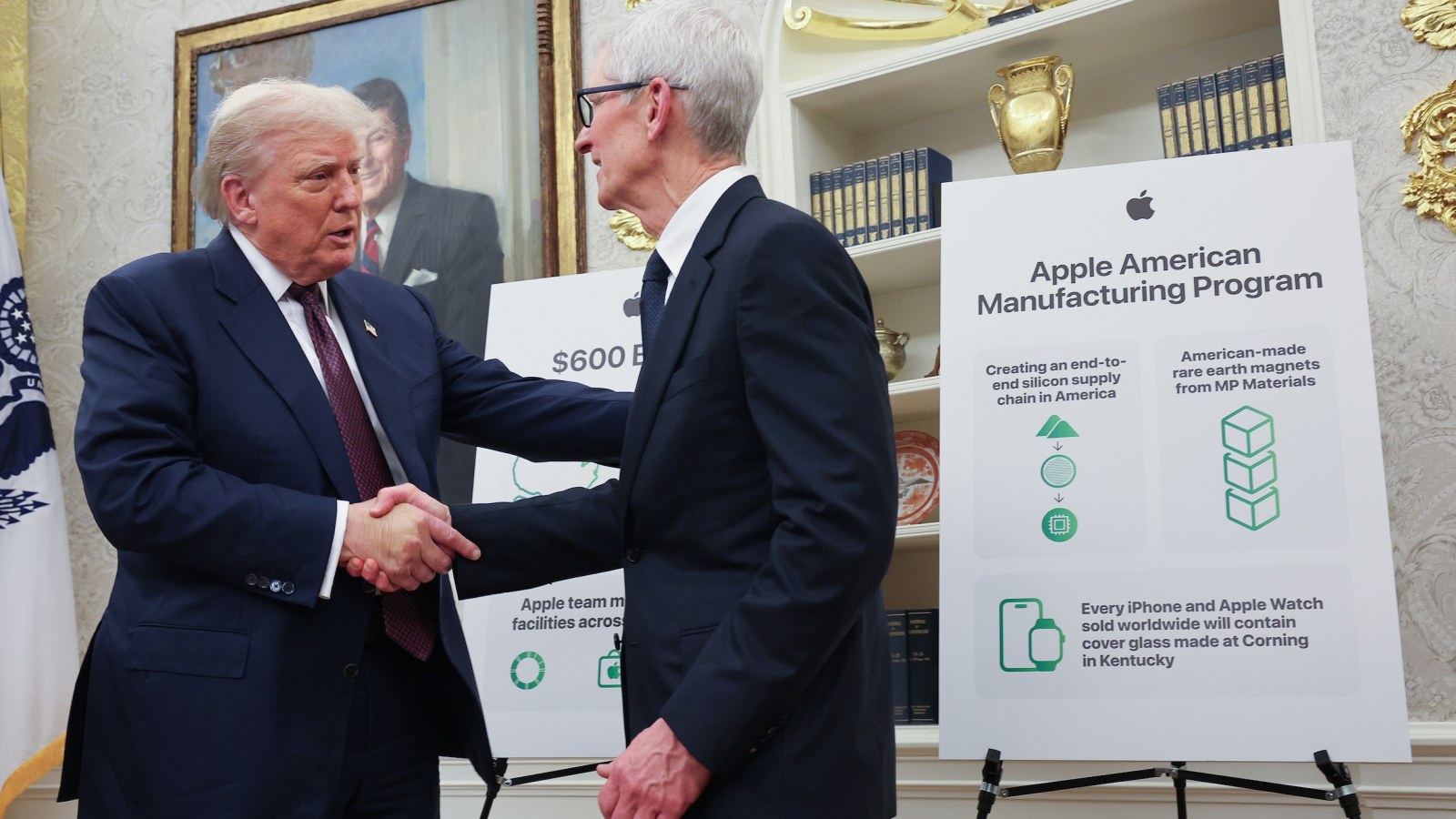By Nathan Picarsic And Emily de La Bruyère
Copyright newsweek

At a recent gathering with tech CEOs, President Donald Trump lauded several companies that expressed plans to expand production in the United States. He also hinted at tariff exemptions for those that follow through with such plans. But the White House should not settle for empty promises and construction photo-ops. To realize its reindustrialization vision, the Trump administration should fully leverage tariff pressures to see cement poured and jobs delivered at new U.S.-based production facilities.The Trump administration has staked its economic vision on reindustrialization. That’s sound on both economic and strategic grounds. And it is wisely starting with critical inputs like semiconductors, as evidenced by a soon-to-be-released Section 232 investigation.That investigation will underscore that the Trump administration sees tariffs as a catalyst. Tariffs will help guarantee enduring demand for American-made semiconductors and other goods that unlock a variety of downstream applications. The president’s vision for tariffs—one shared by Commerce Secretary Howard Lutnick, Treasury Secretary Scott Bessent, USTR Jamieson Greer, and trade and manufacturing policy advisor Peter Navarro—is coming into focus, but it risks failure if implemented with half-measures.As the Biden administration’s CHIPS Act revealed, one-time, supply-side incentives are insufficient to support domestic production at scale, especially in the capital-intensive and complex supply chains that fuel downstream growth. To address the demand side, the Trump administration is implementing a tariff-led approach to recalibrating America’s global trade and investment relations. At the same time, it has intervened to take stakes in keystone companies, like Intel, and tied domestic production to its strategies for leadership in emerging technological domains, such as with its AI Action Plan. Collectively, those policies aim to activate the private sector and market forces needed to reindustrialize.The private sector appears to be responding with new domestic production commitments. For example, downstream tech champions, like Apple with its American Manufacturing Program, have announced efforts to construct new U.S. facilities. But the U.S. government needs to make sure these promises translate into action. And for that purpose, the question is not whether tariffs are announced but how they are enforced.Robust tariff enforcement in sectors like semiconductors can make clear to those deploying capital—semiconductor and semiconductor equipment manufacturers, their downstream customers, and the capital markets supporting and judging them—that sustained demand will exist for U.S.-made goods. Additional policy pressure can help boost demand even further. That can start with low-hanging fruit, like federal procurement preferences that include “Buy American” provisions as well as expansion of Section 5949 prohibitions to block any goods with Chinese-origin semiconductors from supplying national security critical systems.That starting point can help inform semiconductor tariff implementation. Tariffs need to be applied immediately, and tariff exemptions should be limited. Decisions about which exemptions are made—as well as what related direct funding and tax incentives the government deploys—should be tethered to intensive monitoring of exposure to Chinese influence throughout the supply chain. A “chip-for-chip” expectation should be the bare minimum for any company with foreign production; steps should be taken to prohibit production in China and no company receiving tariff exemptions should be sharing technology with Chinese entities.If a company commits to build domestically, it should be required to place those production facilities into service before receiving tariff exemptions or other government support. Congress and the Commerce Department should execute oversight and enforcement accordingly to monitor for tariff evasion and circumvention. The prospect of clawbacks of government support, as well as the retroactive revocation of tariff exemptions and tax breaks, should provide additional pressure for companies to build in America—and for markets to value domestic production appropriately. Ultimately, rather than exemptions, the administration should structure a schedule of tariff multipliers of domestic U.S. content for products that use U.S.-manufactured semiconductors.Reindustrialization is the right strategic focus. Demand-side measures are the right approach. But even the right approach to the right problem risks failure if not properly executed.Xi Jinping has remarked that relying on foreign supply of critical technologies—like semiconductors—is tantamount to building one’s house on someone else’s foundation. For too long, the United States has been happy to take that approach. President Trump understands the strategic malpractice of depending on foreign supply. Now, his administration must make sure it places America’s new, reindustrialized foundation on solid ground.Nathan Picarsic and Emily de La Bruyère are Senior Fellows at the Foundation for Defense of Democracies and co-founders of the supply chain and geopolitical risk startup Horizon Advisory.The views expressed in this article are the writers’ own.



